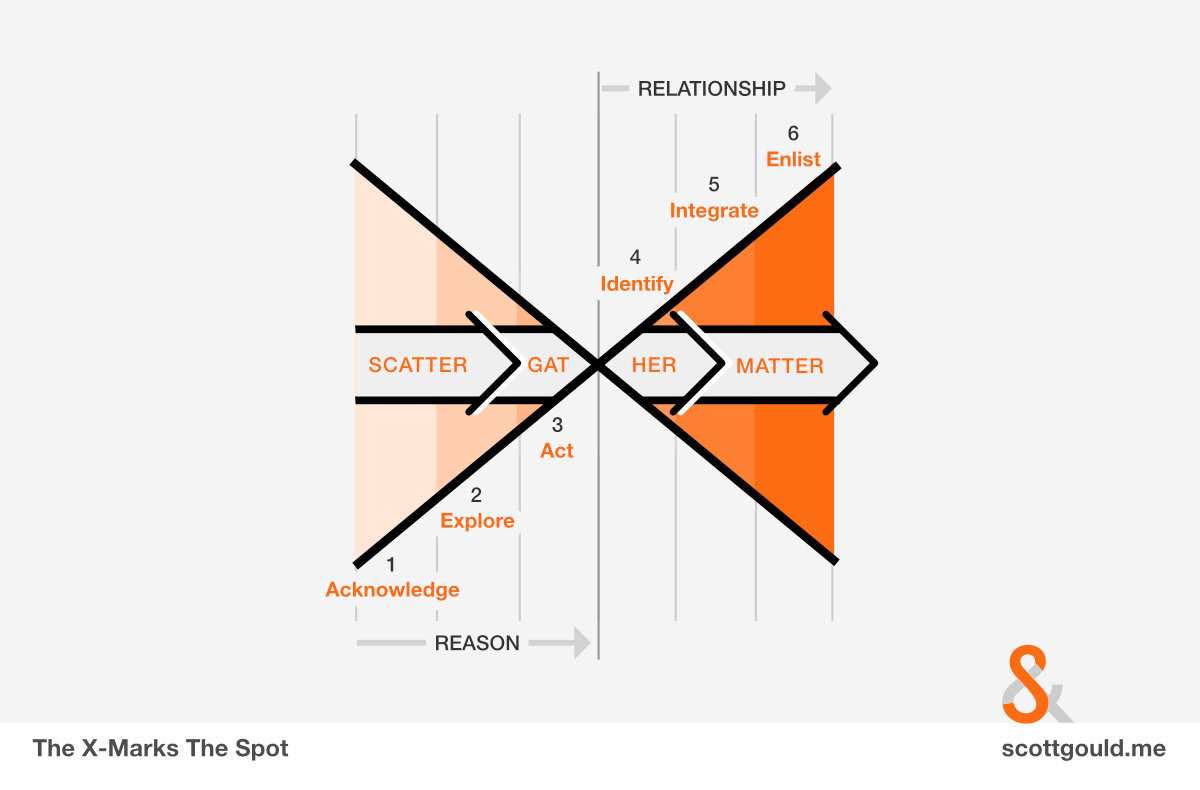The Engagement Assessment is a quick indicator of the success of any engagement endeavour. It does this by asking 12 self-reporting questions to ascertain the type of activity that you are doing: more of the kind of activity that gets engagement, the higher your score.
The uniqueness of this tool compared to other surveys and assessments is that:
- it clarifies which distinct level of engagement you are operating at, and,
- it tells you how to move to the next level with a tailored recommendation based on the data.
This second part of recommendation is very important. I have not found a tool that does similar, and yet the whole purpose of measurement itself is to help you make a decision (a paraphrase of Douglas Hubbard from How to Measure Anything). Thus this assessment specifically helps you make a decision about what to do next.
How does the algorithm work?
The assessment asks 12 questions, which relate to two of the models from my book, The Shape of Engagement.
The results are provided along three indices:
- First, an overall percentage of all the questions, which yields your headline status.
- Secondly, the three processes of engagement are measured. (Those familiar with my work will recognise the language of Scatter, Gather and Matter.) Each question relates to one or two of the processes, and thus a percentage for each process is returned.
- Thirdly, the assessment maps the answers in six pairs against the six psychological levels of engagement. This is used to determine which of the six levels you are strongest in.
The combination of those three indices are then used to create a unique recommendation, which is the best way for you to go from your current status to the next level of engagement.
What are the questions based on?
Primarily the 12 questions, as based on the models in my book, are the product of years of research and experience.
Additionally, when developing the general format of the questions I took into consideration the many survey and audit tools for engagement that already exist, including:
- The EE Benchmark Indicator, by The Enterprise Engagement Alliance
- The Utrecht Work Engagement Scale, by Schaufeli & Bakker
- The Q12 Employe Engagement and the CE3 / CE11 Customer Engagement instruments, by Gallup
- The Good Company Self-Assessment, by McBassi & Company
- The Horse Power Metric
- The Personal Engagement Profile, by Kevin Kruse
- Bill Lee’s Organic Customer Growth Diagnostic, from his book, The Hidden Wealth of Customers.
Why measure activity?
The psychological state of engagement within the subject is a response to the activity carried out by the agent. Therefore as an indicator, activity is a suitable proxy for determining engagement levels.
Self-reporting activity is also easy and free, compared to the costs of a fuller survey.
This assessment can be used to survey, which is one of the services that I provide for clients.
What happens to the data?
Your results are stored under a random Assessment ID. By taking the assessment, you agree to let me use your response data in an anonymous capacity for my research. That research is to understand the trends around engagement.
The research is carried out in order to make the assessment results better for you, and is processed under Article 6(1)(f) of the GDPR, as a legitimate interest.
You can remove your data from the research at anytime by sending me your Assessment ID (that is the only way I can determine your data). The ID is at the bottom of the results page, and if you chose to have the results emailed to you, at the bottom of the email. The ID beings with “EAA”, followed by a series of numbers and letters.
To request or remove your data, either forward me your original email, or quote your Assessment ID, using this email: contact@sgould.co.
Your results are stored on this website, which is a WordPress website using the Gravity Forms plugin, hosted by WordPress.com. For further details, read my website’s privacy policy.
As a separate matter, when you get your results, you have the option to choose to join my mailing list if you wish. Your subscription to my list is managed entirely separately to your assessment data. Again, for more on this, visit my website’s privacy policy.


Comments